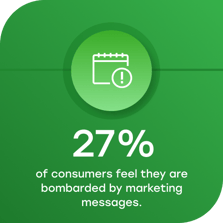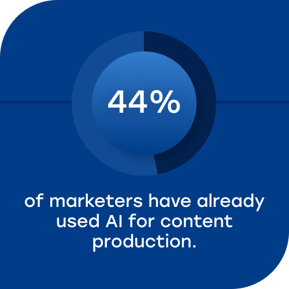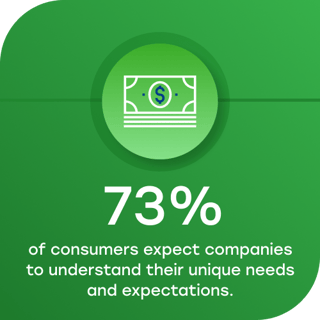The Role of Artificial Intelligence in Data-Driven Advertising

Brent is the Co-founder and Chief Data Science Officer at Tunnl.
Marketing departments and C-suites alike have been buzzing about artificial intelligence for months. What it means for content teams, when and how to invest in it appropriately, and if regulation is on the way have been among the top questions circulating through LinkedIn, closed-door meetings, and as break-room banter.
But the real question is, what’s in it for you as a data-driven advertiser?
AI is being lauded as the secret to success for lean teams with tight budgets and few resources, and AI-powered tools have been favorites for advertisers everywhere for many years already. Several of the tactics you employ in your campaigns lean on AI and machine learning to get you the results you depend on, but there’s certainly more potential for you to tap into if you want to maximize the value of AI innovations in your campaigns.
Through our extensive involvement in advancing the field of microtargeting for public affairs, purpose-driven brands, and issue advocacy clients, Tunnl has been helping advertisers and their agencies tap into the power of AI audience targeting to reach the right people with their campaigns in an increasingly complex media landscape.
Audience identification and audience targeting are among the most beneficial ways AI can improve your data-driven campaign planning, implementation, and optimization - along with several other areas we’ve identified. Keep reading to discover why AI is being celebrated so enthusiastically right now, and how you can get in on the artificial intelligence action to maximize your campaign impact.
Table of Contents
I. What is Data-Driven Advertising?
II. Media Fragmentation, Ad Fatigue, and AI: How Has Advertising Changed Over the Years?
III. 5 Data-Driven AI Tactics to Leverage in Your Campaigns
- Rapid Data Analysis
- Decision Intelligence
- Audience Intelligence
- Creative Intelligence
- Personalization
IV. Incorporate AI Advertising Tactics into Your Campaigns with Audience-Based Media Buys
What is data-driven advertising?
Data-driven advertising refers to the practice of using data and analytics to inform and optimize various aspects of the advertising process. It involves collecting, analyzing, and leveraging data to make informed decisions about targeting, creative content, placement, timing, and budget allocation in advertising campaigns.
In data-driven advertising, the focus is on using data from various sources, such as consumer behavior, demographics, media consumption, and more to tailor advertisements to specific audiences and maximize their effectiveness. This approach goes beyond traditional methods of advertising that rely on assumptions or broad demographic segments, creating campaigns that are more effective, efficient, and personal.
Data-driven advertising is made possible by advancements in technology–like the AI and machine learning that power Tunnl’s audience intelligence platform–and the availability of large volumes of data. It allows advertisers to:
- make more informed decisions
- reduce the waste of resources by targeting the right audience
- achieve better outcomes, including brand awareness, customer engagement, and conversions
But changes in consumer behavior have complicated - and further necessitated - data-driven advertising. What’s changed and how has innovation accelerated to keep up with consumer habits and advertiser needs? Let’s get into it.
Media Fragmentation, Ad Fatigue, and AI: How Has Advertising Changed Over the Years?
The average consumer sees hundreds, if not thousands, of ads every day. Everywhere consumers go to get media - which has also exploded in the last decade - is saturated with ads between programs, during videos, bordering webpages, and peppered throughout social media feeds.
That’s one major change that has rocked the ad world over the past several years: more ads everywhere. As cord-cutters began leaving cable behind, networks sold more ad space to buoy revenue. With TV advertising budgets diversifying to reach audiences on other platforms, digital ad space has gotten overcrowded.
 Ads are everywhere, all the time, and consumers are fed up.
Ads are everywhere, all the time, and consumers are fed up.
66% of consumers surveyed for The Optimove 2023 Consumer Marketing Fatigue Survey want fewer marketing messages, and 27% feel they are bombarded by marketing messages. HubSpot reports that an overwhelming majority of consumers find ads intrusive. Other research suggests that seeing an ad more than 11 times makes a consumer less likely to make a purchase from your brand.
The phenomenon is called ad fatigue or banner blindness. It occurs when consumers see your ads so many times that they feel more annoyed than interested, and it has led to many consumers tuning out ads altogether. It’s taking a toll on advertisers, who are experiencing higher cost-per-click, lower conversions, and damaged brand reputations.
But you still need to get your message in front of the right people who actually care and are willing to take action. How can you do that when consumers have already had it up to here with ads in general?
Relevance is your answer, and AI can help you achieve that, even amidst the mounting complications of reaching modern consumers.
 Media fragmentation has consumers splitting their time across more media platforms and formats than ever before, making it difficult to get your message seen and understood by the right people in the right places just enough times to inspire action. You could be wasting thousands of dollars on platforms your target audience doesn’t spend much time on, or displaying your ads to people who are irrelevant to your campaigns.
Media fragmentation has consumers splitting their time across more media platforms and formats than ever before, making it difficult to get your message seen and understood by the right people in the right places just enough times to inspire action. You could be wasting thousands of dollars on platforms your target audience doesn’t spend much time on, or displaying your ads to people who are irrelevant to your campaigns.
With the right data on your side, you can transcend fragmented attention and ad fatigue to see better results and make a bigger impact. But a data-driven advertising approach can demand a lot of resources - time, money, specialists, etc. How do you tap into the benefits of data-driven advertising with minimal lift for you and your team?
Enter artificial intelligence.
5 Data-Driven AI Advertising Tactics to Leverage in Your Campaigns
AI has been simplifying data-driven processes for years. Tunnl’s founding team of microtargeting pioneers has been utilizing machine learning and AI for decades, and it’s probably behind several of the tools you use today to make your marketing decisions, deploy campaigns, and analyze campaign performance. About 61% of marketers have used AI in their marketing activities, according to Influencer Marketing Hub, whether they realize it implicitly or not.
See how many of these five data-driven AI advertising tactics you’re already using and which will help you usher in a new era in advertising efficiency and accuracy.
1. Rapid Data Analysis
Developing a data-driven strategy for every element of your ad campaigns is a time-consuming task that often gets rushed simply for the sake of keeping things moving. After all, there are hundreds, thousands, tens of thousands of data points to consider as you build your campaign.
But you need to analyze a large quantity of data to make reliable decisions about your content, creative, targeting, placements, budget, and more. AI sifts through the noise for you.
Artificial intelligence can quickly analyze massive amounts of data, picking out trends and synthesizing the key points into clear, actionable, simple data visualizations that save you time and confusion.
In the Tunnl platform, for example, survey responses are matched against billions of lines of consumer and voter data to assess the interests, opinions, and behaviors of groups who align on a particular issue. But what you see when you login to your Tunnl account are clear data visuals that depict how your target audience consumes social media and what their demographic details are.
With machine learning, we quickly deliver the insights you need and eliminate the need for you to analyze an extensive data set on your own.
Rapid data analysis lays the foundation for the various types of data-driven intelligence you’ll deploy throughout your campaigns. Let’s dig into what a few of those categories can look like with the help of AI.
2. Decision Intelligence
With so much data to sift through - even the information simplified by AI - decision paralysis is a natural reaction. How do you apply your findings to making effective creative? What does that data mean for your budget? Can this information help you hone your audience targeting?
Layer in AI to help you make these decisions, and you get decision intelligence: the practice of digitizing and automating strategic decision-making across your entire organization, and especially your advertising campaigns, with the help of AI-analyzed data. Decision intelligence is necessary in every category of your campaign if you’re committed to a data-driven approach.
 Depending on the AI-powered platform or system you use, the resultant decision intelligence may be prescriptive or require manual extrapolation. Decision intelligence can empower your strategy or even enact it for you.
Depending on the AI-powered platform or system you use, the resultant decision intelligence may be prescriptive or require manual extrapolation. Decision intelligence can empower your strategy or even enact it for you.
Google, for example, offers Smart Bidding, which uses AI to automatically optimize advertisers’ bidding strategies at every auction. Tunnl uses machine learning to offer detailed data about a target audience that can be manually assessed to determine an ideal ad spend distribution. Both methods offer value–and the choice to add human ingenuity or not–to what AI has observed.
The bottom line is this: Artificial intelligence can ingest data, analyze it, determine the best course of action for you based on that data, and, in some cases, automatically apply those decisions.
Decision intelligence helps you pick the best platforms for your campaigns based on past results or viewership patterns, split up your budget for optimal reach efficiency with your target audience - which AI can help you identify too.
3. Audience Intelligence
Audience intelligence encompasses the audience research that helps advertisers identify and target the right people. Without this crucial step, your creative will be off base, personalization will fall short, and every decision you’ve made about your campaign is at risk of being a complete waste.
Artificial intelligence can contribute greatly to your audience identification and audience targeting, simplifying these arduous processes.
You may already be using AI-powered audience intelligence solutions in your audience-based media buying strategy without realizing, like lookalike audience services that use artificial intelligence to analyze your existing contacts and find similar ones. But there are more innovations for you to capitalize on in the AI audience intelligence world.
Take Tunnl and our audience intelligence platform, for instance.
We use AI and machine learning to model issue-based audiences from local and national survey data, delfrivering digestible audience insights and easy-to-use audience intelligence tools to empower advertisers and their agencies with data-driven audience targeting.
With Tunnl’s extensive data library and the proprietary AI behind our audience building processes, you save an enormous amount of time trying to identify and learn about your audience. You pick the issue that’s relevant to your campaign, and we surface media consumption data, demographics, linear TV preferences, and more that tell you who you’re reaching and how to do it.
This puts you in the ideal position to create campaigns that reach and resonate with the right people on the precise issues your media buys are based on.
4. Creative Intelligence
Putting together a complete ad strategy involves several components, including the creative elements you’ll use to draw consumers’ attention as they scroll and stream. Processes that used to take several costly hours of laborious creativity are being automated through the use of AI.
With artificial intelligence, ad creative becomes equal parts art and science.
Creative intelligence AI platforms, also known as creative AI platforms, use artificial intelligence to assist and enhance various aspects of the creative process. These platforms leverage AI algorithms and machine learning to analyze, generate, and optimize creative content, including images, videos, text, and other multimedia elements. 
You’ve heard of a few of these platforms already, as generative AI is among the most popular forms of artificial intelligence in the news right now. ChatGPT, anyone? Generative AI has become a popular tool for creating written content, including ad copy, and helping advertisers ideate entire campaigns. Some services, like Midjourney and DALL-E, enable marketers to create AI-generated images through plain-language prompts.
As Influencer Marketing Hub reports, about 44% of marketers have already used AI for content production.
But AI can also provide critical creative analysis on existing campaign collateral - including your competitors’ - to pinpoint which creative elements can reliably produce specific performance outcomes. Plain language: AI has seen everything on the internet and knows what works, so you can focus your creative efforts in the right direction for maximum impact.
5. Personalization
You’ve heard that personalized marketing and advertising campaigns perform better than generic ones. You’ve probably even incorporated personalization into your campaigns already, like automatically adding first names to your email marketing subject lines to increase your open rate.
But what if you could tailor your customers’ experiences based on their individual preferences, past behaviors, and current needs?
 AI has been making this possible for years. Think of how Amazon provides tailored recommendations to you as you shop. We have AI and machine learning to thank for that - and Amazon attributes 35% of its revenue to the power of this personalized experience.
AI has been making this possible for years. Think of how Amazon provides tailored recommendations to you as you shop. We have AI and machine learning to thank for that - and Amazon attributes 35% of its revenue to the power of this personalized experience.
Tapping into your audience intelligence and using AI tools to deliver personalized ads to your customers is an exceptional way to build relationships with your customers that feel one-to-one, but work at scale. After all, 73% of consumers expect companies to understand their unique needs and expectations.
Proving that you understand your customers and have anticipated their needs with your ads can help you conquer the unhelpful ad fatigue that has left so many consumers fed up with your competitors.
Incorporate AI Advertising Tactics into Your Campaigns with Audience-Based Media Buys
Artificial intelligence and machine learning are powerful tools for today’s advertisers.
But they are only as good as the data you feed them.
When you have a data-backed understanding of who you want to reach, what they care about, and how they interact with media, products, brands, and more, you have everything you need to develop holistically targeted, highly effective, and maximally efficient campaigns.
If you want to incorporate artificial intelligence into your advertising campaigns to futureproof your efforts and streamline every aspect of your campaigns, the best place to start is with AI-powered audience intelligence offered by data partners like Tunnl.
An audience-first approach like audience-based media buying ensures you put your target audience first and use your knowledge about their preferences and behaviors to influence every decision you make. Audience-based media buying unites the data-driven nature of AI with the empathetic human connections that consumers still seek over the everyday advertising noise; it’s your ticket to lasting, high-value bonds with today’s distracted, ad-fatigued consumer - and your clearest path to high ROI with AI.


